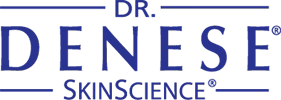Hydroxy Acids, also referred to often as fruit acids are a group of plant and animal derived acids used in a variety of skincare products. For nearly forty years, they have been found in anti aging and exfoliating skin care products. There are two main categories: Alpha Hydroxy Acids (which we are going into depth today) and Beta Hydroxy Acids.
AHA is more commonly used for acne, skin pigmentation, skin dryness and wrinkles. Unlike many cosmetic ingredients, it not only acts on the epidermis (the most superficial layer of our skin), but it also penetrates to the dermis (middle layer of our skin). There are several types of AHA’s found in skincare: Citric Acid, Glycolyic Acid, Hydroxycaproic Acid, Hydroxycapryluic Acid, Lactic Acid, Malic Acid and Tartaric Acid.
The most researched are glycolic and lactic acids. This might be because these are the least likely to cause irritation. There have been studies that show the effectiveness in these acids in reversing the effects of aging and improving wrinkles. In addition, they have been proven to be useful in improving skin elasticity, tone and hydration.
These visible changes are seen because of the process of exfoliation. Due to exfoliation, it also promotes collagen and blood flow, aids the correction of discoloration from scars and age spots, improves the appearance of soft lines and wrinkles, prevents break outs, help brighten complexion, and help increase product absorption.
Exfoliation refers to the process of shedding the more superficial, usually dead, skin cells. The removal of dead skin cells also promotes cellular turnover, or new skin cell generation. Our most popular exfoliating products include the Firming Facial Pads, the Microdermabrasion Cream and the Black Clay Mask. Through this process alone, you are addressing the appearance of lines and wrinkles, prevention of break outs, and skin tone. It also helps with product absorption. If you have too many dead skin cells, they will allow for the skin care products to simply sit on top and block it from reaching the newer skin cells.Through cellular turnover, you are addressing hyper pigmentation and uneven skin tone; due to creating new evenly colored skin cells while also helping shed the older, discolored cells.
Collagen is the protein fiber that keeps the skin plump and young looking. We all know that through the years, our collagen begins to break down, resulting in sagging skin or lack of firmness. The AHAs penetrate the dermis and help destroy older collagen fibers promoting the skin to make new ones, in turn, firming the skin.
AHAs have also been known to have minor side effects while your skin adjusts to the product. Temporary side effects may include, but are not limited to: burning, itching, blisters and eczema. To reduce your risk of irritation, it is often suggested to gradually work your way into using AHA products. To begin, it may be necessary to use the products every other day or even less frequently. The goal is gradually increase use until your skin can tolerate it every day. Another side effect is that the peeling effects of highly-concentrated AHAs may allow your skin to become more sensitive to UV rays for up to one week after use. This can be easily avoided by wearing a broad spectrum SPF daily, which you should be doing anyway!

